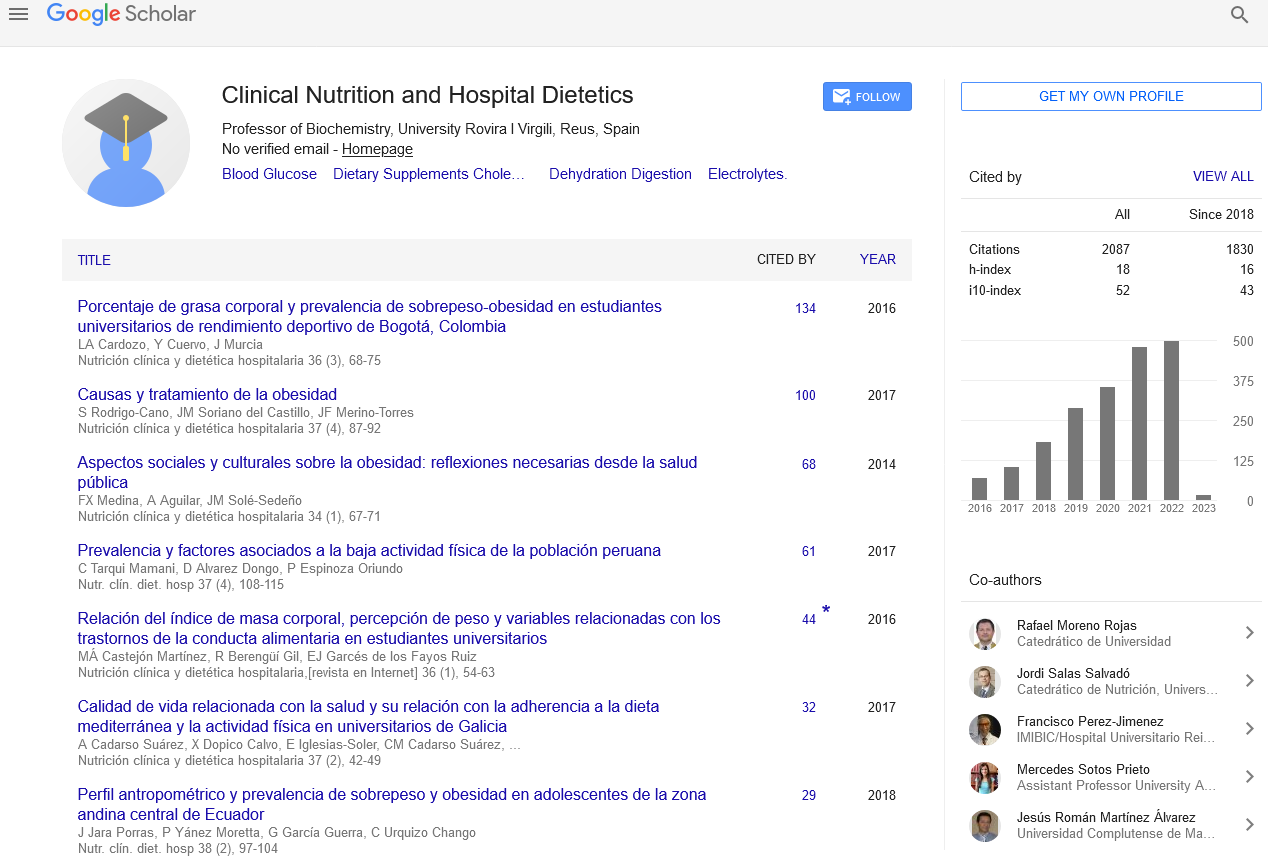Abstract
Nutritional risk and malnutrition in patients with liver cirrhosis in a university hospital
Author(s): Sousa, Francisca Isabelle da Silva1; Moreira, Tyciane Maria Vieira1; Medeiros, Lívia Torres1; Daltro, Ana Filomena Camacho Santos2; Matos, Maria Rosimar Teixeira3; Portugal, Mileda Lima Torres4; Batista, Ana Clara Vital3; Garcia, José Huygens Parente1
Introduction: liver cirrhosis leads to several organic and functional changes that impact on nutritional status.
Objective: To assess the risk and nutritional status of patients with liver cirrhosis at a university hospital.
Methods: cross-sectional study, comprising 100 patients over 18 years of age. Sociodemographic, anthropometric and functional data were collected. The anthropometric parameters used were body mass index, body cir cum - ference, skinfolds and handgrip strength. The following screenings were used: Subjective Global Assessment, Royal Free Hospital - Global Assessment and Royal Free Hospital Nutritional Prioritizing Tool. Pearson's Chi-square test and Spearman's correlation were used, considering a signi - ficance level of 5%.
Results: There was a predominance of men (57.0%), with a mean age of 51.9 ± 11.69 years. There was a predo - minance of high nutritional risk (55%) and malnutrition. Among the subjective methods, malnutrition was detected mainly by the Royal Free Hospital - Global Assessment. Considering all parameters, malnutrition was detected mainly by the handgrip strength, which was positively correlated with body mass index (r = 0.207; p <0.039), arm muscle circumference (r = 0.232; p = 0.020), adductor pollicis muscle thickness (r = 0.206; p = 0.040) and corrected arm muscle area (r = 0.160; p = 0.113).
Discussion: studies show that patients with liver disease have a high nutritional risk and a high prevalence of malnutrition.
Conclusion: The studied population was found to be at high nutritional risk and malnourished, mainly due to the lower handgrip strength.
Google Scholar citation report
Citations : 2439
Clinical Nutrition and Hospital Dietetics received 2439 citations as per google scholar report
Indexed In
- Google Scholar
- Open J Gate
- Genamics JournalSeek
- Academic Keys
- JournalTOCs
- ResearchBible
- SCOPUS
- Ulrich's Periodicals Directory
- Access to Global Online Research in Agriculture (AGORA)
- Electronic Journals Library
- RefSeek
- Hamdard University
- EBSCO A-Z
- OCLC- WorldCat
- SWB online catalog
- Virtual Library of Biology (vifabio)
- Publons
- MIAR
- Geneva Foundation for Medical Education and Research
- Euro Pub
- Web of Science
Journal Highlights
- Blood Glucose
- Dietary Supplements
- Cholesterol, Dehydration
- Digestion
- Electrolytes
- Clinical Nutrition Studies
- energy balance
- Diet quality
- Clinical Nutrition and Hospital Dietetics




